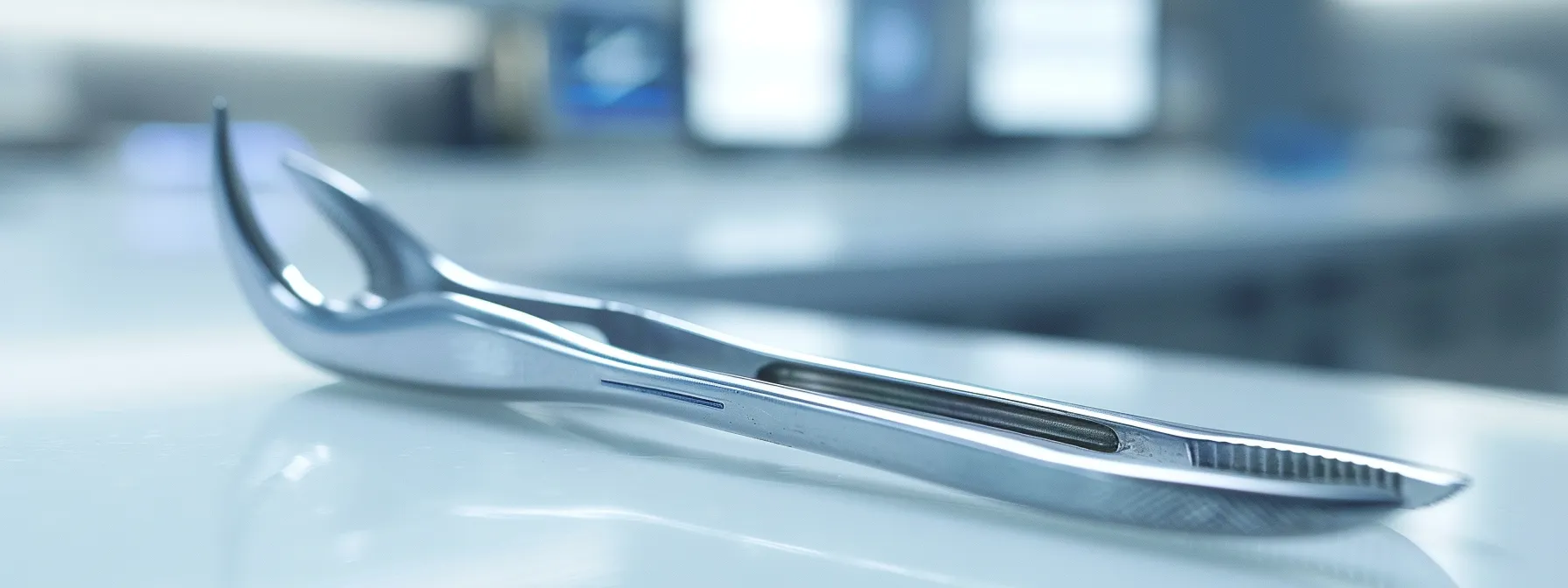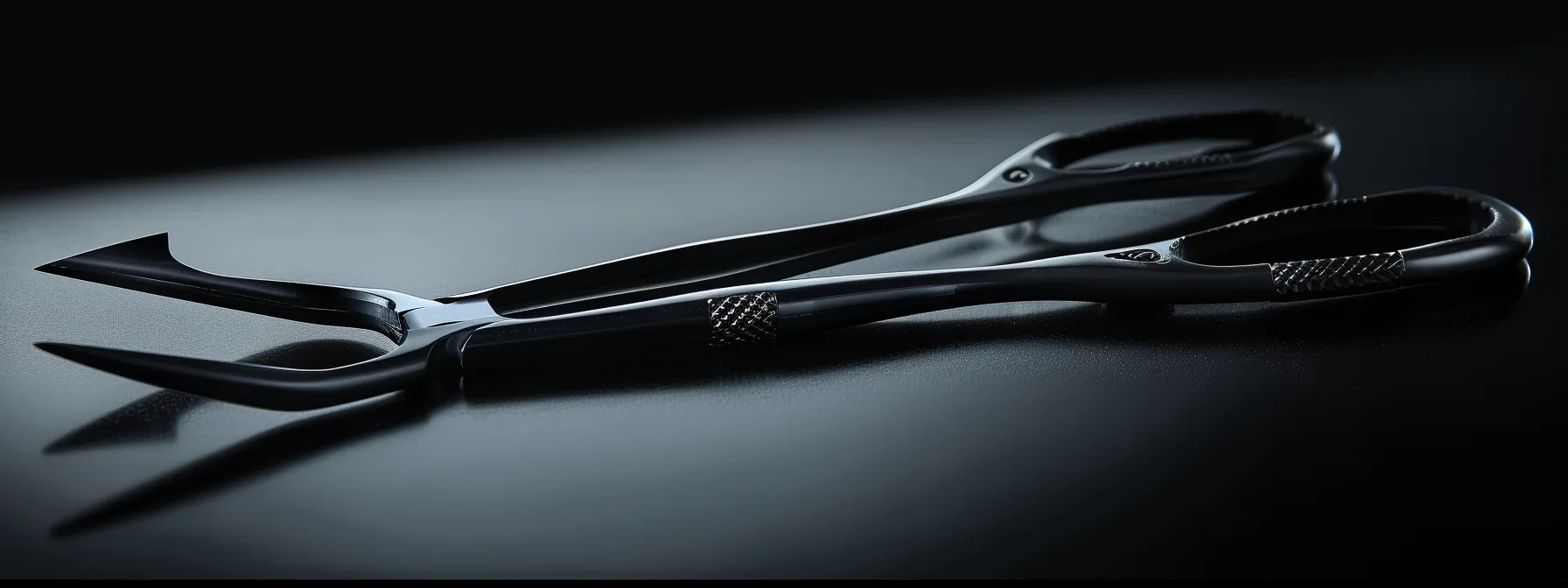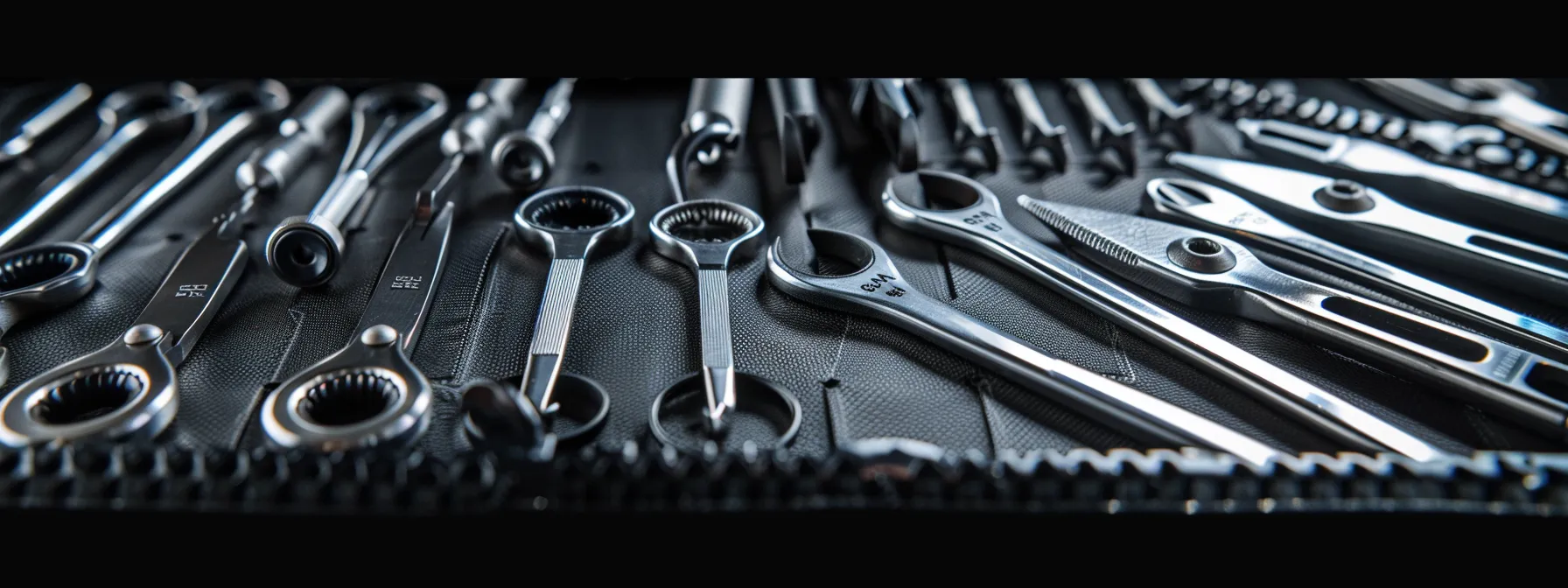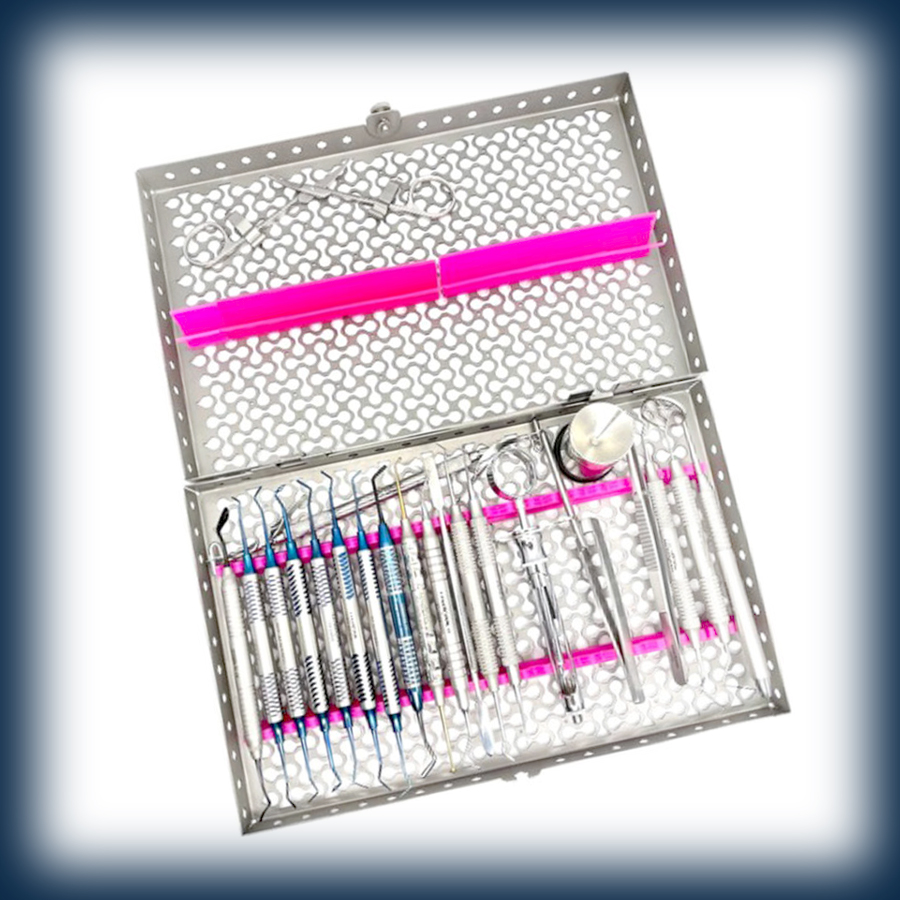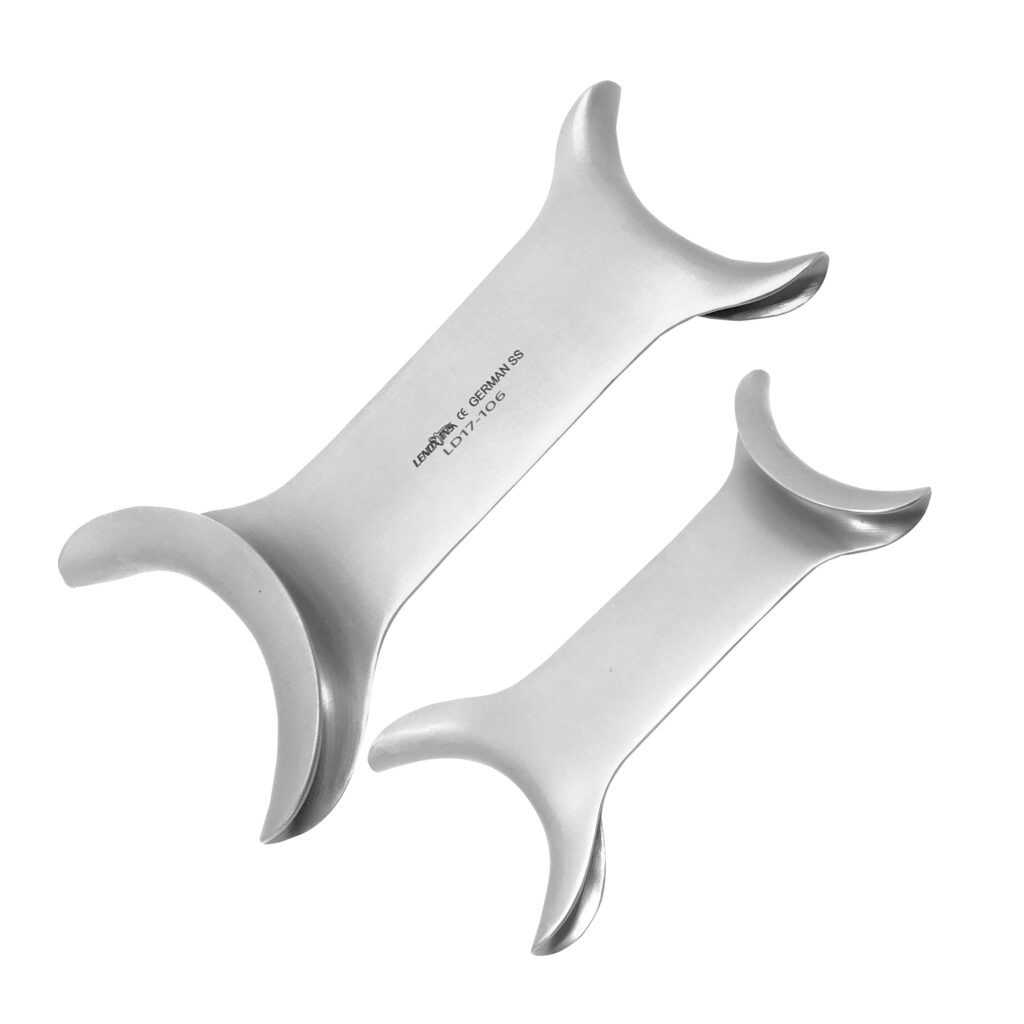Discover Different Tissue Forceps for Surgical Precision
- Posted October 22, 2024
- by lenoxinstro
Surgical tissue forceps are essential tools in various surgical procedures, yet selecting the right type can often be challenging. Did you know that different forceps can significantly impact the efficiency of surgeries involving the gastrointestinal tract or orchiectomy? In this guide, I will cover the types of non-toothed and toothed tissue forceps, along with specialized options for specific procedures. You’ll learn how to choose the best forceps for your needs, ultimately reducing the risk of infection and improving patient outcomes. By understanding these tools better, you can enhance your surgical practice and patient care.
Understanding Surgical Tissue Forceps

Surgical tissue forceps are essential instruments used during procedures to grasp, manipulate, and secure tissues and other materials. I will explain their general classification, emphasizing their pivotal role in wound healing and general surgery. I will also cover common materials used in their manufacturing, as well as important sterilization and hygiene considerations to ensure safety and efficacy.
Definition and Purpose of Tissue Forceps
Surgical tissue forceps are specialized instruments designed to grasp and manipulate tissue during various surgical procedures. They play a crucial role in gynaecology and laparoscopy, allowing surgeons to effectively handle delicate tissue flaps and facilitate procedures requiring precision. With their adhesive grip and articulating jaws, these forceps enhance control and stability, ensuring that tissues are securely held and properly manipulated, thereby optimizing patient outcomes and minimizing complication risks.
General Classification of Forceps
When considering the general classification of surgical tissue forceps, I find it essential to recognize their various types, each designed for specific surgical tasks. For instance, forceps made with tungsten carbide provide increased durability and precision, especially crucial in urology where delicate manipulation of organs is often required. Additionally, some forceps come equipped with wire handles to enhance grip and control, reducing the likelihood of injury during intricate procedures.
Importance of Tissue Forceps in Surgery
The importance of tissue forceps in surgery cannot be overstated. These instruments are vital for optimal tissue handling during procedures like vascular surgery and debridement, where precision is paramount. As a surgeon, I have relied on these forceps, particularly when working alongside a needle holder, to ensure delicate manipulation of tissues while minimizing trauma, thus enhancing patient outcomes and safety in both operating rooms and laboratory settings.
Common Materials Used in Forceps Manufacturing
In my experience, surgical tissue forceps are typically manufactured from high-quality materials that enhance their performance and longevity. Stainless steel is a popular choice due to its strength, resistance to corrosion, and ability to maintain a sharp tooth grip for precise tissue handling. Additionally, some forceps incorporate a ratchet mechanism for improved locking strength, allowing surgeons to securely hold tissues during procedures without continuous finger pressure, which can lead to fatigue and compromise control.
Sterilization and Hygiene Considerations
Maintaining proper sterilization and hygiene of surgical tissue forceps is critical to ensure patient safety and prevent infections, especially when working on sensitive areas like the dermis or during abdominal surgeries involving the stomach. I always prioritize the use of instruments made from titanium, as their properties enhance sterilization processes and resist corrosion over time. Regularly inspecting my tweezers for any signs of wear or damage is also vital; damaged instruments can compromise the integrity of the surgical procedure and increase risks to patients.
Non-Toothed Tissue Forceps: Types and Uses

Non-toothed tissue forceps are vital for various surgical applications, providing precise handling without risking damage to delicate tissues. I will explore thumb forceps and their wide range of applications, Delve into DeBakey forceps for vascular tissues, and discuss Babcock forceps designed for managing delicate structures. Additionally, I will highlight key handling techniques that ensure safe and effective use while minimizing ischemia and other potential complications.
Overview of Non-Toothed Forceps
Non-toothed tissue forceps are critical surgical instruments commonly used in various medical procedures, particularly in delicate manipulations involving organs. For instance, during organ transplantation, these forceps allow surgeons to grasp tissues gently without causing damage, making them ideal for fragile structures like veins in the urinary system. In my experience, selecting non-toothed forceps crafted from materials such as ceramic enhances performance and minimizes the risk of tissue trauma, ensuring safer surgical outcomes.
Thumb Forceps and Their Applications
Thumb forceps, recognized for their ease of use, are indispensable tools in surgical procedures that involve handling delicate tissue. These instruments enable me to grasp tissues and cells with precision, minimizing the risk of inflammation or damage during manipulation. Made from high-quality metal, thumb forceps enhance control and versatility, making them ideal for tasks such as hemostasis where careful tissue management is essential:
- Versatile use in various surgical procedures
- Effective handling of delicate tissues
- Minimizing inflammation during surgeries
- Ensuring precision in hemostatic applications
Debakey Forceps for Vascular Tissues
Debakey forceps are an essential tool for surgeons working with vascular tissues, primarily due to their unique design and functionality. These forceps, often made from tungsten for increased durability, provide optimal control when manipulating delicate structures, which is crucial in procedures involving diseases affecting blood vessels. I frequently use Debakey forceps in surgeries where I need to handle tissues gently, utilizing cotton sponges to absorb excess fluid, ensuring a clear view of the surgical field while minimizing trauma to the surrounding tissues.
Babcock Forceps for Delicate Tissues
Babcock forceps are instrumental when working with delicate tissues in the abdomen, particularly during procedures like biopsies and organ retrievals. Their unique design allows me to grasp and retract tissue with minimal trauma, providing a clear view of the anatomy while ensuring stability. The adjustable length of these forceps enhances my ability to navigate complex surgical fields, allowing for efficient handling of soft tissues without compromising their integrity.
Handling Techniques for Non-Toothed Forceps
When utilizing non-toothed forceps, maintaining the right amount of pressure is critical to prevent damage to delicate tissues. During procedures, I always ensure I have a firm grip on the forceps without applying excessive force, which could lead to tissue trauma, especially in sensitive areas like during plastic surgery. Proper sterilization techniques are essential to ensure the instruments are safe for use, and I often have a syringe ready to flush the operative area, enhancing visibility while safeguarding against wound complications.
Toothed Tissue Forceps for Secure Grasping
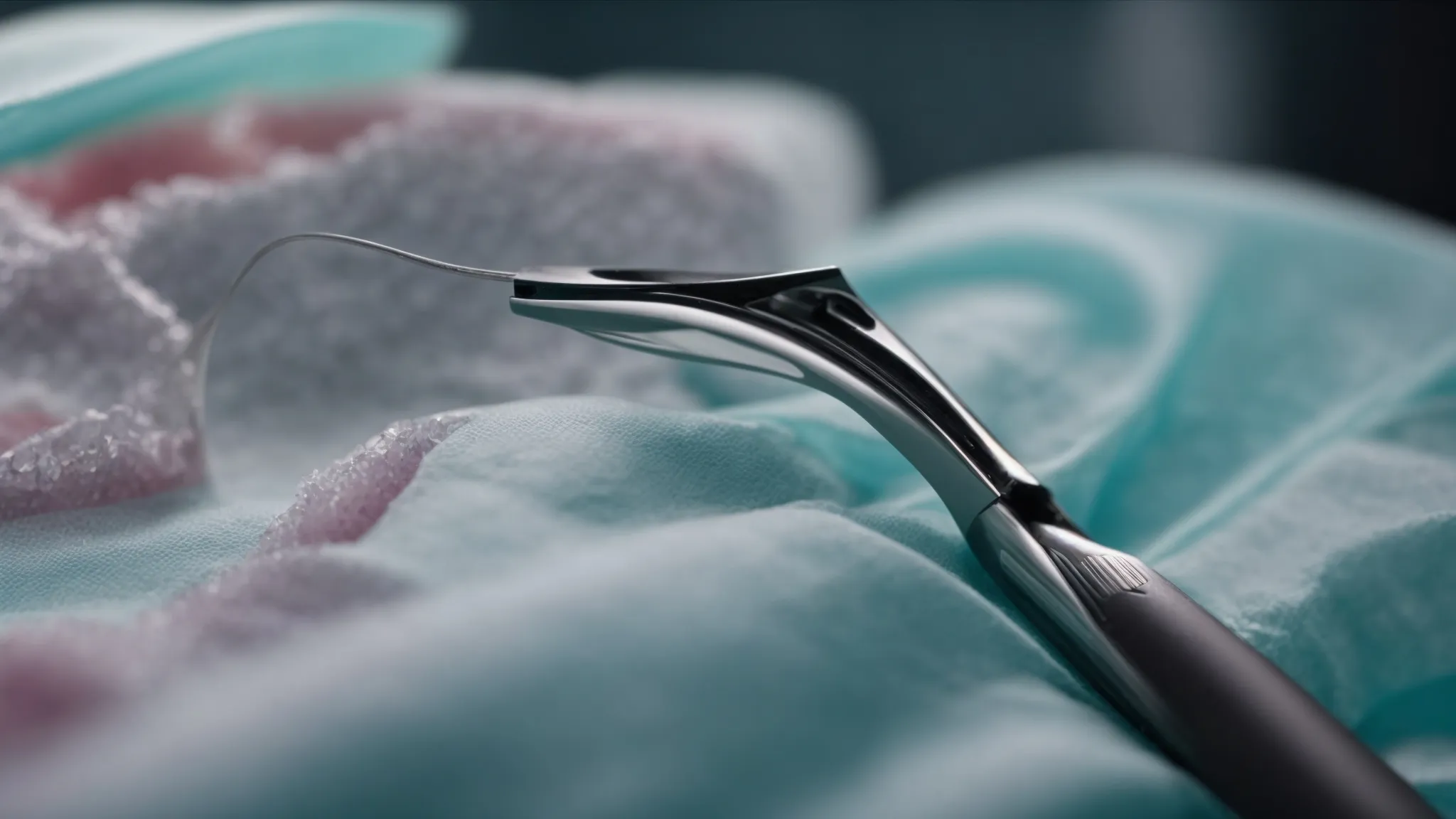
Toothed tissue forceps are crucial tools for secure grasping during surgeries, particularly in dissection. I will discuss key types such as Adson forceps for skin and soft tissue, Allis forceps for effective tissue retraction, and Kocher forceps designed for holding firm tissues. Additionally, I will share important safety tips to prevent bleeding and ensure optimal outcomes, especially in delicate procedures like neurosurgery.
Overview of Toothed Forceps
Toothed tissue forceps are essential for secure grasping during surgical procedures, especially when handling delicate structures like blood vessels or during skin grafting. Made from durable stainless steel, these instruments provide a reliable grip that reduces the risk of slippage, ensuring that the tissue remains stable while I work. In my experience, effective use of toothed forceps is critical for maintaining control over graft placement and tissue manipulation, allowing for precision in surgeries that demand a delicate touch. Micro surgery needle holders scissors forceps set str
Adson Forceps for Skin and Soft Tissue
Adson forceps are indispensable when I perform surgeries involving skin and soft tissue due to their precise grasping ability. The serrated, toothed design allows me to secure tissue effectively without causing excessive trauma, which is crucial in procedures that may involve blood vessels or when addressing foreign body removal. In orthopedic surgery, the delicate handling these forceps provide minimizes the risk of complications, facilitating a smoother surgical experience:
| Aspect | Description |
|---|---|
| Design | Serrated, toothed for secure grasping |
| Uses | Ideal for skin and soft tissue manipulation |
| Applications | Useful in surgeries involving blood vessels and foreign body removal |
| Specialized Use | Particularly effective in orthopedic surgery |
Allis Forceps for Tissue Retraction
Allis forceps are a staple tool I rely on during surgical procedures for effective tissue retraction. Their unique design features a serrated, toothed grip that allows me to securely grasp and hold tissues without slippage, making them invaluable for surgeries like cholecystectomy or hernia repairs. By minimizing trauma during handling, Allis forceps help maintain the integrity of tissues, ultimately improving surgical outcomes and patient recovery times:
| Aspect | Description |
|---|---|
| Design | Serrated, toothed for secure grasping |
| Uses | Effective for tissue retraction in various surgeries |
| Applications | Commonly used in cholecystectomy and hernia repairs |
| Benefits | Minimizes tissue trauma and enhances stability |
Kocher Forceps for Firm Tissues
Kocher forceps are essential tools for securely grasping firm tissues during surgical procedures. I often rely on these forceps for their robust design, which features serrated jaws that provide an effective grip on structures such as fascia or tendons. Their ability to hold tissues firmly allows me to perform intricate maneuvers with confidence, minimizing the risk of slippage or tissue damage, thus improving overall surgical efficiency and patient safety.
Safety Tips for Using Toothed Forceps
When using toothed forceps, I emphasize the importance of maintaining a steady grip without exerting excessive pressure, as this can cause tissue damage. It’s essential to ensure that the forceps are properly aligned with the tissue to prevent unnecessary trauma. Regular inspections of the toothed tips are crucial; worn or damaged forceps can compromise the integrity of the surgical procedure and may lead to adverse outcomes.
Specialized Tissue Forceps for Specific Procedures

Specialized tissue forceps play a pivotal role in various surgical procedures, tailored to meet specific needs. Russian forceps are invaluable in gynecological surgeries for grasping and manipulating delicate tissues. Bayonet forceps excel in ENT procedures, enabling precise access to confined areas. Micro forceps are ideal for microsurgery, offering exceptional control and handling, while biopsy forceps facilitate effective tissue sampling. Selecting the right specialized forceps ensures optimal outcomes based on the surgical context.
Russian Forceps in Gynecological Surgeries
In my experience, Russian forceps are indispensable in gynecological surgeries, primarily due to their unique design that allows for a secure grasp on delicate tissues. Their broad, rounded jaws minimize trauma while providing excellent control and stability, which is essential in procedures such as hysterectomies or laparoscopies. By effectively holding and maneuvering tissues, Russian forceps enhance my ability to perform intricate surgical tasks, ultimately leading to better patient outcomes and a smoother surgical experience.
Bayonet Forceps for ENT Procedures
Bayonet forceps are invaluable tools in ENT procedures, specifically designed to navigate the confined anatomical spaces of the head and neck. Their unique shape allows me to grasp and manipulate delicate tissues effectively without obstructing the surgical field, which is critical during interventions like tonsillectomies or endoscopic sinus surgeries. In my practice, the precision offered by bayonet forceps not only enhances my ability to safely handle structures but also minimizes potential trauma, ensuring optimal patient outcomes and a smoother workflow in the operating room.
Micro Forceps in Microsurgery
Micro forceps are indispensable tools in microsurgery, designed specifically for precision handling of delicate tissues and structures. Their small size and fine tips allow me to perform intricate maneuvers, making them ideal for procedures such as neurosurgery or ophthalmic surgery where control is paramount. In my practice, I find that utilizing micro forceps enhances both my capability to work in confined spaces and the overall surgical outcome, as they minimize trauma and maintain tissue integrity during complex operations.
Biopsy Forceps for Tissue Sampling
Biopsy forceps are essential tools for effective tissue sampling during diagnostic procedures. These instruments allow me to obtain precise tissue specimens with minimal trauma, which is crucial for accurate pathology results. Their design, often featuring sharp blades and a reliable grasping mechanism, ensures that I can confidently collect samples from various tissues, providing crucial insights into patient diagnoses and treatment options: micro surgical forceps tweezers
- Designed for effective tissue sampling with minimal trauma.
- Features sharp blades for precise specimen collection.
- Vital for obtaining accurate pathology results.
Selecting Specialized Forceps for Surgical Needs
Selecting specialized forceps for surgical needs is essential to achieving optimal outcomes in various procedures. I prioritize understanding the specific requirements of the surgery I am performing, as different forceps are designed to handle various tissue types and surgical scenarios effectively. For instance, using Russian forceps for gynecological surgeries allows me to securely grasp delicate tissues, while bayonet forceps are tailored for ENT procedures, providing the precision needed in confined anatomical spaces.
- Russian Forceps: Ideal for gynecological surgeries for grasping delicate tissues.
- Bayonet Forceps: Designed for ENT procedures to navigate confined spaces.
- Micro Forceps: Essential for microsurgery, allowing precision handling of delicate structures.
- Biopsy Forceps: Vital for obtaining accurate tissue samples during diagnostic procedures.
Choosing the Right Tissue Forceps for Surgery

Choosing the Right Tissue Forceps for Surgery
Assessing tissue type and surgical requirements is critical when selecting tissue forceps, as each procedure demands specific handling techniques. I prioritize ergonomics and my own comfort to reduce fatigue during longer surgeries. Furthermore, ensuring compatibility with other surgical instruments enhances overall efficiency. Balancing cost with quality is essential, as I aim to adhere to surgical best practices for optimal patient outcomes.
Assessing Tissue Type and Surgical Requirements
When assessing tissue type and surgical requirements, I always consider the specific characteristics of the tissues I am working with, as different procedures necessitate varying levels of manipulation and precision. For instance, when handling delicate vascular tissues, I prefer non-toothed forceps, as they minimize trauma while providing a secure grip. Conversely, for firmer tissues, like skin or fascia, toothed forceps offer the needed security and control, ensuring that I can perform the procedure effectively while safeguarding the surrounding structures:
- Evaluate the type of tissue involved in the procedure.
- Select appropriate forceps that match the tissue‘s delicacy or firmness.
- Ensure that chosen forceps enhance surgical precision and minimize trauma.
- Consider ergonomics and comfort to reduce fatigue during lengthy procedures.
Ergonomics and Surgeon Comfort
Ergonomics play a pivotal role in selecting tissue forceps, as comfort directly impacts a surgeon‘s efficiency and focus during long procedures. I have found that forceps designed with ergonomic handles significantly reduce hand fatigue, allowing me to maintain better grip and control while minimizing discomfort. Prioritizing the right design not only enhances my ability to perform precise manipulations but also supports consistent performance throughout the surgery, ultimately benefiting patient outcomes:
- Assess the design of forceps for comfort and ease of use.
- Choose ergonomic handles to reduce hand fatigue during lengthy procedures.
- Focus on maintaining a steady grip for improved control and precision.
- Ensure that the selected forceps are compatible with other surgical instruments.
Compatibility With Other Surgical Instruments
Compatibility with other surgical instruments is a key consideration when selecting tissue forceps for surgery. I always ensure that the forceps I choose can work seamlessly with tools like needle holders, scissors, and retractors. This careful selection enhances the overall efficiency of the surgical procedure, reducing the likelihood of complications and ensuring that each instrument complements the other for optimal functionality:
- Assess how forceps interact with needle holders and scissors.
- Select forceps that enhance the effectiveness of other instruments.
- Prioritize compatibility to streamline surgical workflows.
Balancing Cost and Quality Factors
Balancing cost and quality is critical when selecting surgical tissue forceps. While it can be tempting to opt for more affordable options, I’ve learned that investing in high-quality forceps often leads to better outcomes and reduces long-term costs associated with repairs or replacements. For instance, I prefer stainless steel or titanium instruments, as their durability ensures they remain effective over time, thereby enhancing surgical precision and enhancing patient safety. By prioritizing quality over the initial price tag, I have consistently seen improved efficiency in surgical procedures and reduced instances of complications. tissue forceps
Adhering to Surgical Best Practices
Adhering to surgical best practices is essential when selecting tissue forceps for various procedures. I always emphasize the importance of understanding the specific requirements of each surgery to choose the most suitable instruments. For instance, when dealing with delicate tissues, I ensure that I use non-toothed forceps to minimize potential trauma, while for robust tissues, toothed forceps provide the necessary grip. By following these guidelines, I optimize surgical outcomes and enhance patient safety, affirming my commitment to best practices in the operating room.
Recent Developments in Tissue Forceps

Recent developments in surgical tissue forceps have focused on innovations in design and materials, enhancing their functionality in the operating room. The adoption of disposable forceps has streamlined sterilization processes, while technological advances in manufacturing have improved their precision and durability. These changes have significant influences on surgical outcomes, and I will discuss future directions in forceps development that promise even greater improvements in surgical efficacy.
Innovations in Forceps Design and Materials
Recent innovations in surgical tissue forceps design and materials have made a significant impact on their functionality and usability in the operating room. High-quality materials such as titanium and advanced composites not only enhance durability but also improve the instruments’ resistance to corrosion and wear, ensuring longer service life. As a surgeon, I have experienced the benefits firsthand; for example, the introduction of ergonomic handles has minimized hand fatigue during lengthy procedures, allowing for improved precision and control when handling delicate tissues.
| Innovation | Description |
|---|---|
| Enhanced Materials | Use of titanium and composites for better durability and corrosion resistance |
| Ergonomic Design | Handles designed to reduce hand fatigue during long surgeries |
| Disposable Options | Streamlined sterilization processes with single-use forceps |
| Improved Precision | Technological advances enhancing the precision of forceps |
Adoption of Disposable Forceps
The adoption of disposable forceps has significantly transformed surgical practices in recent years. As a surgeon, I appreciate the convenience and enhanced safety they offer, particularly in minimizing the risk of cross-contamination. Disposable forceps eliminate the need for sterilization protocols, allowing for faster turnover in the operating room, which ultimately leads to improved efficiency and patient outcomes.
Technological Advances in Manufacturing
Technological advances in manufacturing surgical tissue forceps have greatly improved their effectiveness and reliability in the operating room. The incorporation of computer-assisted design (CAD) and advanced machining techniques allows for the production of forceps with enhanced precision and durability. I have observed that these innovations not only increase the accuracy of the instruments but also reduce the risk of failure during critical procedures, ensuring that surgeons can rely on their tools to maintain the highest standards of care for their patients.
Influence on Surgical Outcomes
The advancements in surgical tissue forceps have significantly influenced surgical outcomes by enhancing precision and safety during procedures. For instance, the introduction of ergonomic designs not only minimizes hand fatigue but also allows me to maintain better control over delicate tissues, which can reduce complication rates. As a surgeon, I have experienced firsthand how utilizing high-quality forceps improves my ability to perform complex tasks efficiently, thus positively impacting patient recovery and overall satisfaction.
Future Directions in Forceps Development
As I look toward the future of forceps development, I anticipate significant advancements in both materials and design that will further enhance their functionality in the operating room. Innovations such as smart forceps, equipped with sensors to provide real-time feedback on tissue conditions, have the potential to revolutionize surgical precision and patient safety. Furthermore, the ongoing exploration of biodegradable materials for disposable options can improve sterilization processes while addressing environmental concerns, aligning with the healthcare industry’s push for sustainable practices.
Conclusion
Understanding the various types of surgical tissue forceps is vital for enhancing surgical precision and patient safety. The meticulous selection of appropriate forceps tailored to specific procedures can minimize tissue trauma and improve overall outcomes. Moreover, staying informed about recent advancements in materials and design, including disposable options, can streamline practices and reinforce best hygiene protocols. By prioritizing quality instruments and employing effective techniques, surgical professionals can optimize their performance and ensure safer, more effective patient care.





